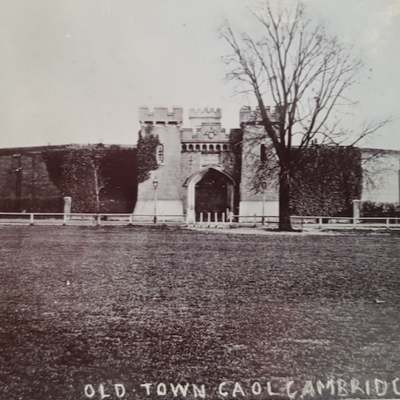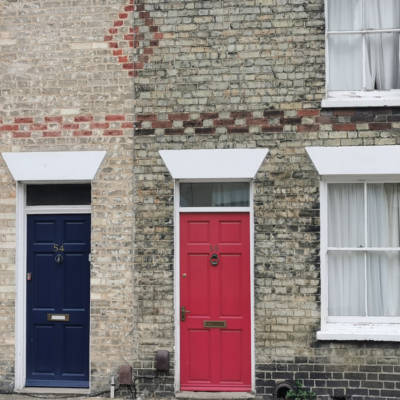Search by topic
- archaeology
- architecture
- bricklayer
- Building of Local Interest
- carpenter
- church
- crime
- dressmaker
- fire
- Great Eastern Railway
- listed building
- medieval
- oral history
- Public House
- Rattee & Kett
- Religious House
- Roman
- scholar
- school
- Then and Now
- tudor
- women
- work
- world war one
- world war two
Search by text
4, Holland House, Upper Gwydir Street
History of 4 Upper Gwydir Street
1881
James Lloyd, head, 50, railway servant, b Duckinfield
Jane, wife, 52, b London
Jane C, daughter, 13, scholar, b Cambridge
Ann C, daughter, 10, scholar, b Cambridge
Thomas C Carter, 19, stepson, booksellers assistant, b Cambridge
1891
John Thomas Quinsee, head, 42, plumber, b Cambridge
Henrietta, wife, 41, b Longstanton
Percy, son, 17, painter, b Cambridge
Vincent, son, 17, clerk, b Cambridge
Sydney, son, 13, watchmakers apprentice, b Cambridge
Bernard, son, 8, scholar, b Cambridge
Cecil, son, 5, scholar, b Cambridge
Lawrence, son, 3, scholar, b Cambridge
Mary Ann Francis, 1, b Cambridge
1900
CIP 26.1.1900: Local Men At The Front …. serving in South Africa: Private P Quinsee, Upper Gwydir Street, “D” Squadron, 9th Lancers, with Lord Methuen’s force.
CDN 20.2.1900: A Boy’s Extensive Robberies: Bernard Quinsee, a lad of 16, living at 4, Upper Gwydir-street, was charged with stealing £6 16s. 9 1/2d., between the 2nd and 16th February, from the Racquets and Five Court Company, Portugal street.
Mr Vinter appeared for the prisoner.
The evidence given at the last hearing by Robert Moore, manager of the Racquet Courts, and Detective White was read over. The Detective further stated that on Saturday, he, in company with Detective Sergeant Marsh, went to the prisoner’s parents’ house, and took possession of the gas engine, the electric battery, a small dynamo, and other articles, which prisoner had previously said he had purchased with money he had stolen.
Mr Vinter: Prisoner showed everything willingly, and made no attempt to disguise anything.
Prisoner was formerly charged and pleaded guilty. Mr Vinter said the lad was paid 6s. a week and had certain perquisites. These perquisites had an evil effect. The parents admitted that they had not looked after him or had the check they should have done, and when they enquired where he got the money from to purchase the articles he said he got it through tips.
In answer to Dr Cooper it was stated that the cost the camera was £4 4s. and the engine £5 5s.
Mr Vinter asked the magistrates to deal with the lad under the First Offenders’ Act, if they could possibly see their way to do so. Quinsee would be sent away to Sheffield where he would be given employment by his uncle.
Mr E. H. Parker, on behalf of the proprietors of the Racquet Courts, asked the magistrates to deal with the lad under the First Offenders’ Act.
Dr. Cooper asked how much money had been stolen. Moore, the manager, said since October last there was deficiency of £45.
Mr Vinter said the prisoner had made a clean breast of it. He admitted having stolen £10 4s. or £10 5s., but strenuously denied that he had a larger amount.
The magistrates having consulted in private, the Mayor said the case was too serious to be dealt with under the First Offenders’ Act, and prisoner would be sentenced to one month’s hard labour.
1901
John T Quinsee, 53, plumber, b Cambridge
Henrietta,, 53, b Longstanton
Cecil, 15, cycle maker, b Cambridge
Lawrence, 13, b Cambridge
Fanny, 11, b Cambridge
Ann Stanley, 86, widow, mother-in-law, b Yorkshire
1911
Harry Hones, 52, butcher in butchers shop, b Cambridge
Elizabeth, 51, b Cambridge
Florrie, 19, day girl (domestic), b Cambridge
Leonard, 14, telegraph messenger for Post Office, b Cambridge
Harold, 12, school, b Cambridge
1939
No listing
Contribute
Do you have any information about the people or places in this article? If so, then please let us know using the Contact page or by emailing capturingcambridge@
License
This work is licensed under CC BY-NC-SA 4.0











